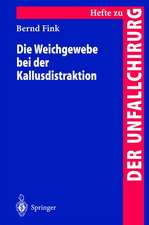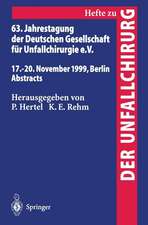Urodynamic Testing After Spinal Cord Injury: A Practical Guide
Autor Jean Jacques Wyndaele, Apichana Kovindhaen Limba Engleză Hardback – 14 aug 2017
The book offers an evidence based knowledge of applicability, clinical value, and limitation, and will give the reader strong diagnostic outcomes that will benefit patients suffering from spinal cord injuries. What is presented in this book is based on expert opinions acquired over decades of urodynamic testing that have taken place in different parts of the world.
| Toate formatele și edițiile | Preț | Express |
|---|---|---|
| Paperback (1) | 508.08 lei 38-44 zile | |
| Springer International Publishing – 12 aug 2018 | 508.08 lei 38-44 zile | |
| Hardback (1) | 521.93 lei 38-44 zile | |
| Springer International Publishing – 14 aug 2017 | 521.93 lei 38-44 zile |
Preț: 521.93 lei
Preț vechi: 549.40 lei
-5% Nou
Puncte Express: 783
Preț estimativ în valută:
99.88€ • 103.90$ • 82.46£
99.88€ • 103.90$ • 82.46£
Carte tipărită la comandă
Livrare economică 10-16 aprilie
Preluare comenzi: 021 569.72.76
Specificații
ISBN-13: 9783319548999
ISBN-10: 3319548999
Pagini: 108
Ilustrații: XI, 108 p. 60 illus., 54 illus. in color.
Dimensiuni: 155 x 235 x 14 mm
Greutate: 0.35 kg
Ediția:1st ed. 2017
Editura: Springer International Publishing
Colecția Springer
Locul publicării:Cham, Switzerland
ISBN-10: 3319548999
Pagini: 108
Ilustrații: XI, 108 p. 60 illus., 54 illus. in color.
Dimensiuni: 155 x 235 x 14 mm
Greutate: 0.35 kg
Ediția:1st ed. 2017
Editura: Springer International Publishing
Colecția Springer
Locul publicării:Cham, Switzerland
Cuprins
1. Introduction.- 2. Physiology and pathophysiology.- 3. Indications and positioning in general diagnosis.- 4. Tests application.- 5. Rules for interpretation.- 6. Curves with data from clinical files, suggested interpretation, consequence for treatment.
Notă biografică
Jean Jacques Wyndaele worked as Full time Ordinary Professor and Chairman of Urology at University Antwerp (UA) and Antwerp University Hospital (UZA). He was the chair of the Animal and Clinical Research Lab of the Urological Department UA and UZA. He promoted 14 PhD Thesis’s and these doctors are working in different continents around the world. He retired from education and clinical practice in 2014.He remains Editor in Chief of the journal Spinal Cord since 2011 and ISCOS president since one year.
Member of several editorial boards. He is Fellow of the International Spinal Cord Society and of the European Board of Urology. He is European School of Urology Faculty member and is member of many major international scientific groups. He was founder and co founder of UControl, Piekernietje, Pelvired in his home country who deal with different parts of health care. He is the actual chair of ESSIC the world organisation for study of chronic pelvic pain.
He isalso author of 403 publications in peer reviewed international and national journals, 83 editorials and 30 chapters in books.
Member of several editorial boards. He is Fellow of the International Spinal Cord Society and of the European Board of Urology. He is European School of Urology Faculty member and is member of many major international scientific groups. He was founder and co founder of UControl, Piekernietje, Pelvired in his home country who deal with different parts of health care. He is the actual chair of ESSIC the world organisation for study of chronic pelvic pain.
He isalso author of 403 publications in peer reviewed international and national journals, 83 editorials and 30 chapters in books.
Textul de pe ultima copertă
This book aims to provide a guide for urodynamic investigation in individuals who have suffered spinal cord injuries. It is universally acknowledged that this type of investigation is valuable and most international guidelines consider it mandatory in patients with neurogenic bladder dysfunction.
The book offers an evidence based knowledge of applicability, clinical value, and limitation, and will give the reader strong diagnostic outcomes that will benefit patients suffering from spinal cord injuries. What is presented in this book is based on expert opinions acquired over decades of urodynamic testing that have taken place in different parts of the world.
The book offers an evidence based knowledge of applicability, clinical value, and limitation, and will give the reader strong diagnostic outcomes that will benefit patients suffering from spinal cord injuries. What is presented in this book is based on expert opinions acquired over decades of urodynamic testing that have taken place in different parts of the world.
Caracteristici
The chapters will provide background information indispensable for understanding and interpreting the urodynamic tests Understanding when the tests should be done, and when they should be repeated, is discussed in the book The author looks at the intricacies of testing, including the patient's position, what equipment to use, how to perform each test and how to avoid risks such as infection and trauma




























